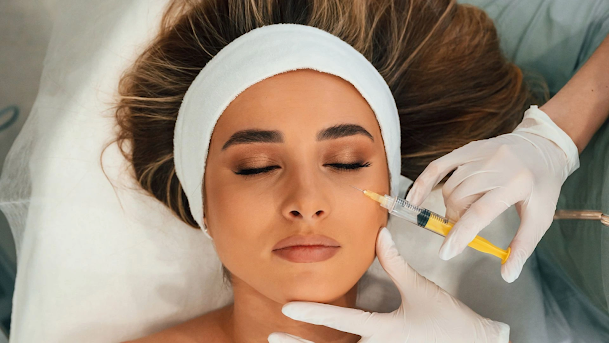How Do Milia Treatments Work to Clear Skin?
Milia are tiny, white, or yellowish bumps that commonly appear on the skin, particularly around the eyes, cheeks, and forehead. These small cysts develop when keratin, a protein found in skin and hair, becomes trapped beneath the surface. While milia are harmless, they can be frustrating for those seeking smooth, clear skin. Understanding how milia treatments work can help individuals choose the most effective method to achieve a flawless complexion.
To address these tiny cysts, various milia treatments have been developed. Many individuals explore different approaches, including professional and at-home remedies, to improve their skin texture and appearance. For those seeking Milia Treatments in Dubai, understanding how these treatments work can be beneficial in choosing the most suitable option.
Understanding Milia and Their Causes
Milia are classified into two types: primary and secondary. Primary milia occur when dead skin cells fail to shed properly, leading to keratin buildup. These often appear in newborns but can affect adults as well. Secondary milia develop after skin damage, such as burns, blisters, or long-term sun exposure, which disrupts the skin’s ability to exfoliate naturally.
Common Milia Treatments and How They Work
There are several treatment methods available to eliminate milia effectively. Some focus on exfoliation and skin renewal, while others involve targeted removal by professionals. Here are the most common treatment options:
Exfoliation and Skincare Routine
One of the simplest and most accessible ways to treat and prevent milia is through a consistent skincare routine. Exfoliation plays a key role in removing dead skin cells, reducing the chances of keratin buildup.
Chemical Exfoliants: Products containing alpha hydroxy acids (AHAs) and beta hydroxy acids (BHAs) help to dissolve dead skin cells and promote skin renewal. Glycolic acid, lactic acid, and salicylic acid are commonly used to prevent the formation of milia.
Physical Exfoliation: Using a gentle facial scrub can help remove surface debris, but it should be done with caution to avoid skin irritation, especially around sensitive areas like the eyes.
Retinoids: Vitamin A derivatives, such as retinol, accelerate cell turnover and prevent clogged pores, reducing the occurrence of milia over time.
Manual Extraction by Dermatologists
For persistent milia that do not resolve with exfoliation, dermatologists often perform manual extraction. This procedure involves using a sterile needle or a small blade to create a tiny incision in the skin, allowing the trapped keratin to be removed.
How It Works: A dermatologist cleanses the skin, makes a small opening in the milium, and gently extracts the contents using a comedone extractor.
Effectiveness: This method provides immediate results and prevents scarring when performed by a professional.
Aftercare: Proper aftercare, including keeping the area clean and moisturized, ensures a smooth healing process and reduces the risk of infection.
Laser Therapy
Laser treatments are highly effective in removing stubborn milia without damaging the surrounding skin. This technique uses focused light energy to break down the cysts, allowing the body to absorb them naturally.
Types of Lasers Used: Fractional lasers and carbon dioxide (CO2) lasers are commonly used for milia removal.
How It Works: The laser targets the affected area, vaporizing the milia while stimulating collagen production.
Advantages: Laser therapy is precise, minimizes scarring, and promotes faster healing.
Cryotherapy
Cryotherapy involves the application of liquid nitrogen to freeze and destroy milia. This treatment is widely used for various skin conditions, including warts and benign growths.
Procedure: A dermatologist applies a small amount of liquid nitrogen to the affected area, causing the milium to dry out and fall off within a few days.
Benefits: Quick and effective for stubborn milia.
Considerations: Temporary redness or mild irritation may occur, but these side effects usually subside quickly.
Chemical Peels
Chemical peels are another effective method for treating milia, particularly when multiple cysts are present. These treatments involve applying a chemical solution to the skin, which exfoliates the top layer and encourages cell turnover.
Common Peels Used: Glycolic acid, salicylic acid, and trichloroacetic acid (TCA) peels are effective in breaking down keratin buildup.
How It Works: The peel removes dead skin layers, reducing the likelihood of new milia forming.
Results: Skin appears smoother and clearer over time with regular treatments.
Topical Treatments
Certain topical treatments can help in preventing and treating milia by promoting exfoliation and preventing clogged pores.
Retinoid Creams: Prescription-strength retinoids, such as tretinoin, can accelerate skin turnover and prevent keratin buildup.
Niacinamide: This ingredient helps to regulate oil production and strengthen the skin barrier, reducing the risk of milia.
Hydrating Moisturizers: Keeping the skin hydrated with non-comedogenic moisturizers prevents excessive dryness, which can contribute to milia formation.
Preventive Measures to Avoid Milia Recurrence
While treatments can effectively remove milia, preventing their recurrence is equally important. Here are some key preventive measures:
Use Non-Comedogenic Products: Opt for skincare and makeup products that do not clog pores.
Avoid Heavy Creams: Thick, oil-based creams can trap keratin and contribute to milia development.
Maintain a Consistent Skincare Routine: Regular cleansing, exfoliation, and moisturization keep the skin healthy and free from buildup.
Sun Protection: Using a broad-spectrum sunscreen prevents skin damage and reduces the risk of secondary milia.
Avoid Picking or Squeezing: Attempting to remove milia at home can lead to scarring and infection.
Conclusion
Milia treatments work by promoting exfoliation, manually extracting cysts, or using advanced dermatological procedures like laser therapy, cryotherapy, and chemical peels. Each method targets the underlying cause of milia, helping individuals achieve clear and smooth skin. Consistent skincare, professional treatments, and preventive measures ensure long-term success in keeping milia at bay. Whether opting for at-home solutions or seeking professional intervention, understanding how these treatments work is essential for maintaining a healthy complexion.



Comments
Post a Comment